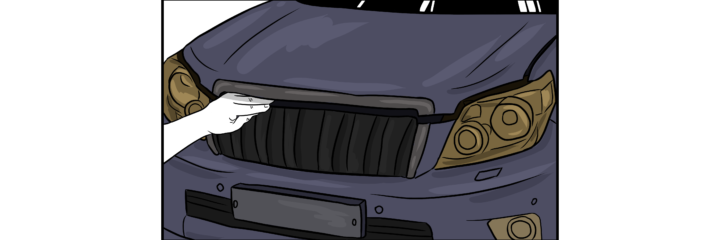You might have made several attempts to try and slam the hood down and get it to lock but with no luck. Or, the hood may actually clamp shut but then pop open when you drive over a bump on the road, making your relief short-lived. For sure, this seemingly silly situation can be exhausting to have to deal with on any given day.
If your car hood is not closing properly, the most likely reason is that the latch is corroded. That’s assuming you haven’t been in an accident recently that may have damaged your vehicle’s hood. How does an impact like an accident affect the proper locking of the hood? First, let’s examine the components of a vehicle’s hood latch mechanism.
- The Hood Lock: that’s what catches and holds the striker firmly in place
- The Release Lever: that’s what releases the safety latch
- The Safety Hook: that’s the hook with a latch to hold the hood in place to lock
Other parts of the hood latch mechanism are the pull handle, the pull handle cable, and the hood striker. All of these components sort of collaborate to lock and unlock your vehicle’s hood. So, if any of these components develops a problem, say, from a hard impact or defective parts, then your hood is likely to have trouble staying shut or popping open as before.
Common Problems in the Hood Latch Mechanism
1. A Worn-Out Release Lever Cable
Naturally, your car hood won’t lock if the release lever cable is failing to return to its original position after you open the hood. This may be as a result of worn-out release lever cables. If the hood release lever cable doesn’t go back to its original position, press the hood release lever inside the car. If the cable still doesn’t retract, let a qualified automobile technician check it out and replace it.
2. Lack of Lubrication in the Hinges and Latch
It’s easier to deal with this one than problems in the lever cable or latch assembly failure. If your car hood doesn’t lock completely, then your hinges and latch might need lubrication. Resist the temptation of using motor oils or WD-40. We say this because even a small portion of high viscous oil will thicken after a while, defeating the actually purpose of lubrication.
Use a silicone spray lubricant instead. Spray the lubricant generously from the various angles on the hinges, including the latch, spring latch, and all the hinge mechanisms.
3. Hood Latch Assembly Failure
After several years of slamming the hood, the latch mechanism will eventually be knocked down under the pressure of all that slamming. This will make it difficult for the latch to engage, thereby causing the hood to fail to close all the way.
To Recap
Your vehicle’s hood latch mechanism would eventually wear out, making it difficult for the hood to latch and lock. If wear and aging is the reason this is happening, you’re likely driving an older model car. We’d say, do not attempt a DIY unless you are sure of what you are doing. If this is happening to a fairly new car though, the problem is most likely from an impact in the general hood area.
Do not put off the repairs either, as driving with your hood slightly open is quite risky. If the hood keeps popping up, it might impair your vision of the road. I’m not imagining the hood suddenly flying open like in the movies. Now that you know what is actually going on underneath your hood, it’s time to contact your mechanic to fix the problem so you can get your car back on the road safely.


